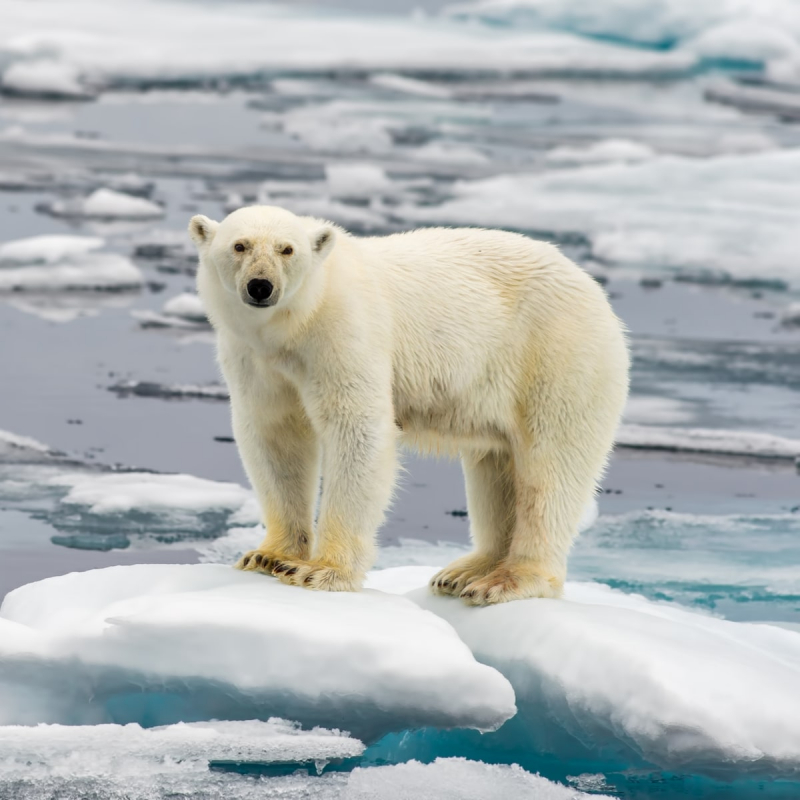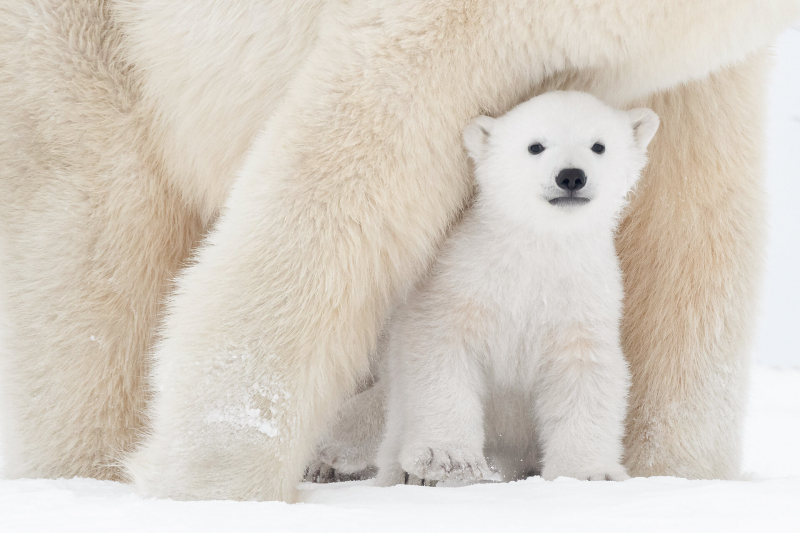Polar Bear
In the bitterly cold Arctic, polar bears live on sea ice and along coastlines. Except for pregnant females, many polar bears venture out onto the sea ice to hunt for seals when sea ice forms over the ocean in cold weather. Mostly, polar bears consume seals. Polar bears frequently spend their idle time at a seal's breathing hole in the ice, watching for a surface appearance of a seal in the water. Additionally, a polar bear may hunt by swimming across the ice. But polar bears are finding it more difficult to hunt due to climate change. In comparison to previous years, ice now melts earlier and forms later. The polar bear would have to scavenge for different, less healthy food without the sea ice.
Polar bears swim in the coastal waters of the Arctic and roam its ice sheets. They have huge, slightly webbed front paws that they use to paddle and are exceptionally good swimmers. Polar bears have been observed swimming hundreds of miles from the coast, but they most likely float on ice sheets for most of the journey.
Polar bears that are pregnant build their dens in the fall, where they will spend the winter and give birth to one to three cubs. In the spring, the mother and her cubs come out of the den together. She will guard them and instruct them in hunting during that period. In order to save polar bears, the United States, Canada, Denmark, Norway, and Russia formed a treaty in 1973.












